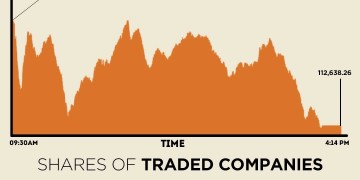Investing.com – Crude prices were a bit lower on Monday, as energy markets looked ahead to this week’s Organization of Petroleum Exporting Countries’ (OPEC) to see whether major producers plan to extend their current production-cut agreement.
U.S. West Texas Intermediate (WTI) lost 57 cents, or about 1%, to $58.38 a barrel by 3:40AM ET (0840GMT).
It rose to $59.05 on Friday, its best level since July 2015, partly driven higher by the closure of the 590,000 barrel-per-day Keystone pipeline connecting Canada’s oil sand fields with the United States following a spill, driving down inventories at the storage hub of Cushing, Oklahoma.
Meanwhile, futures, the benchmark for oil prices outside the U.S., were little changed from their prior close at $63.53 a barrel.
WTI gained about 4.2% last week, while Brent marked a climb of about 1.8%.
Oil ministers from the Organization of Petroleum Exporting Countries and other major producing countries will meet in Vienna on Thursday to decide whether to extend their current production agreement beyond a March 2018 deadline.
Russia said on Friday it is ready to support extending the deal, but made no mention of how long it should last beyond its March expiry.
Under the original terms of the deal, OPEC and 11 other non-OPEC producers, led by Russia, agreed to cut output by about 1.8 million barrels per day for the first six months of 2017. The agreement was extended in May of this year for a period of nine months until March 2018 in a bid to reduce global oil inventories and support oil prices.
The OPEC-led production cuts have been one of the key catalyst supporting the recent rally in oil prices amid expectations that rebalancing in crude markets are well underway.
However, fears that rising U.S. output would dampen OPEC’s efforts to rid the market of excess supplies are prevented prices from rising much further, according to market participants.
Domestic U.S. output has rebounded by almost 15% since the most recent low in mid-2016, and increasing drilling activity for new production means output is expected to grow further, as producers are attracted by climbing prices.
In other energy trading, held steady at $1.779 a gallon, while lost 1.1 cents to $1.943 a gallon.
rallied 7.0 cents, or 2.4%, to $2.986 per million British thermal units.
Fusion Media or anyone involved with Fusion Media will not accept any liability for loss or damage as a result of reliance on the information including data, quotes, charts and buy/sell signals contained within this website. Please be fully informed regarding the risks and costs associated with trading the financial markets, it is one of the riskiest investment forms possible.
Source: Investing.com




























